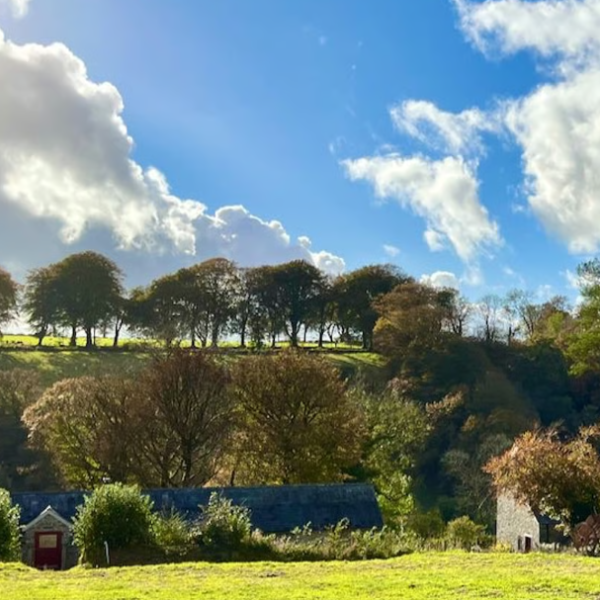10 top tips to improve your water sustainability strategy
The average person in the UK uses about 142 litres of water a day. That water has huge environmental and financial impacts. Before it even arrives in your pipes, it has to be pumped and purified and then it must be pumped and purified again before it can be returned to the water supply. The Water Research Foundation estimates that global water use, storage, and distribution contribute 10% of global greenhouse gas (GHG) emissions. This makes reducing water use, key to global sustainability. There are huge benefits to managing your business’s water use more carefully. Minimising the amount wasted will save money and significantly reduce your carbon footprint.
1 Monitoring your water consumption
As with everything, you need to measure a resource to manage it. Monitoring your water use is relatively straightforward if you have water meters. Bear in mind that you may have more than one meter, so it is important that you know where all of your water meters are located. Smart devices such as “water bots”, which can be fitted to pipes, can help alert you automatically, if water use changes unexpectedly. Monitoring your water use will:
• tell you how well your water saving devices and measures are working
• reveal whether you are meeting your reduction targets
• enable you to detect leaks quickly
• reduce the risk of damage cause by undetected leaks
• enable you to react quickly to costly spikes in usage – a single dripping tap can waste 55,000 litres a year
2 Technology is your friend
There are a huge number of water-saving devices available which allow you to reduce usage without compromising the quality of your customers’ experience. Dual flush cisterns, waterless urinals, sensor and push operated taps, water-saving shower heads are all great ways to reduce your water usage. Tap aerators are also a great way to reduce water consumption without affecting water pressure and these can be deployed effectively in bedrooms washrooms and kitchens.
Washing machines and dishwashers both use significant quantities of water. Investigate how water-efficient the ones you are currently using are. Replacing them with more energy and water-efficient models may well save enough to justify your investment in higher performance machines.
3 Get your team on board with your water strategy
Educating your team is a vital part of any water reduction strategy. Signs in kitchens above veg prep and dishwashing areas can educate and remind staff how to use water more responsibly. Housekeeping can help too. A ‘one flush per clean’ policy can reduce water use significantly and they are in a great position to check for dripping taps and showerheads. Your maintenance team needs to understand the value of prompt action to address leaks as soon as they arise.
4 Customers want to play their part
Many of your customers will already have a good idea of how to use water sustainably but it will do no harm to engage them with helpful information about how they can help you in your sustainability efforts. Things like turning the tap off while brushing teeth or taking a shower in preference to a bath. Putting these things in an interesting, sustainable context will help them take these behaviours more seriously. One water company has estimated that turning off the tap during brushing could save up to 12 litres of water per person per brush – that’s about the same as running the average shower for a minute.
5 Use your water twice
The water that comes out of your taps has been purified to the point it is suitable for human consumption. But many of the things you use it for, such as watering gardens, do not need water of that quality. This is where “grey water” systems can be helpful enabling you to reuse water around your premises and dramatically reduce your water bills. Grey water refers to waste bath, sink and washing water and there is a huge range of systems that allow you to process it in-house to make it suitable for use elsewhere in your business.
6 Treat your drains kindly
We’ve talked a lot about the water that comes out of the tap, but what goes down the drain is equally important to sustainability. Congealed fat, nappies and wet wipes block drains and can lead to fatbergs which require vast amounts of money and energy to clear. If you are found responsible for one, they can also lead to a substantial fine. Milk is also a major problem in drains and can seriously pollute aquatic ecosystems. It is vital that you have a clear policy about what can go down the drain and that you communicate it to your team and your customers. Grease traps are an extremely useful and effective way to control the amount of oils and fats going out of your kitchen and it is worthwhile deploying a contractor to take your cooking oil waste. They can collect your used cooking oils and convert them into biofuels. If you have a sufficient quantity, they may well pay you for your used oils which can help recover some of the cost of buying fresh oil.
7 Managing micro plastics
Micro plastics are a threat to the world’s water supplies. There is mounting evidence that they are a pollutant that is affecting marine life and that they can also impact on the growth of plants and crops. 35% of microfibres in the ocean come from synthetic clothes washed in washing machines. Reducing the quantity of synthetic materials you use can help address this and retrofitting special filters to washing machines can cut the microplastics going into your waste water by as much as 90%.
8 Free water
While water may be scarce in certain parts of the world, it falls freely from the skies in other parts. If you are in one of the latter, harvesting rainwater is a great way to reduce your dependence on energy-intensive piped water. You are effectively tapping into a free resource, and it will be a great source of unchlorinated water to use in gardens, ponds and water features around your property.
9 Work with suppliers
Your water footprint extends beyond your property. Your suppliers will all use water in delivering the goods and services they supply to you. Take the time to identify suppliers who are as concerned about sustainability as you are. Products such as food, drink and fabrics typically involve high water use in their production and external laundry services also place high demands on water supply. Speak to your suppliers to ensure they are doing everything possible to reduce their water footprint and avoid suppliers operating in areas of water scarcity.
10 Support water stewardship strategies
There are a myriad of conservation and environmental activities being undertaken to use natural means to improve water quality, reduce the risk of flooding and preserve more consistent water supply. Initiatives like peatland restoration, rewilding, tree planting, river clean-ups and wetland preservation all have positive impacts on natural water purity and flow. Getting involved in these is a great way to improve the natural environment and your sustainability score. They also make great stories for guests who may even want to get involved themselves. What’s more, many of these activities will help mitigate the effects of climate change and reduce the risk of flooding.









